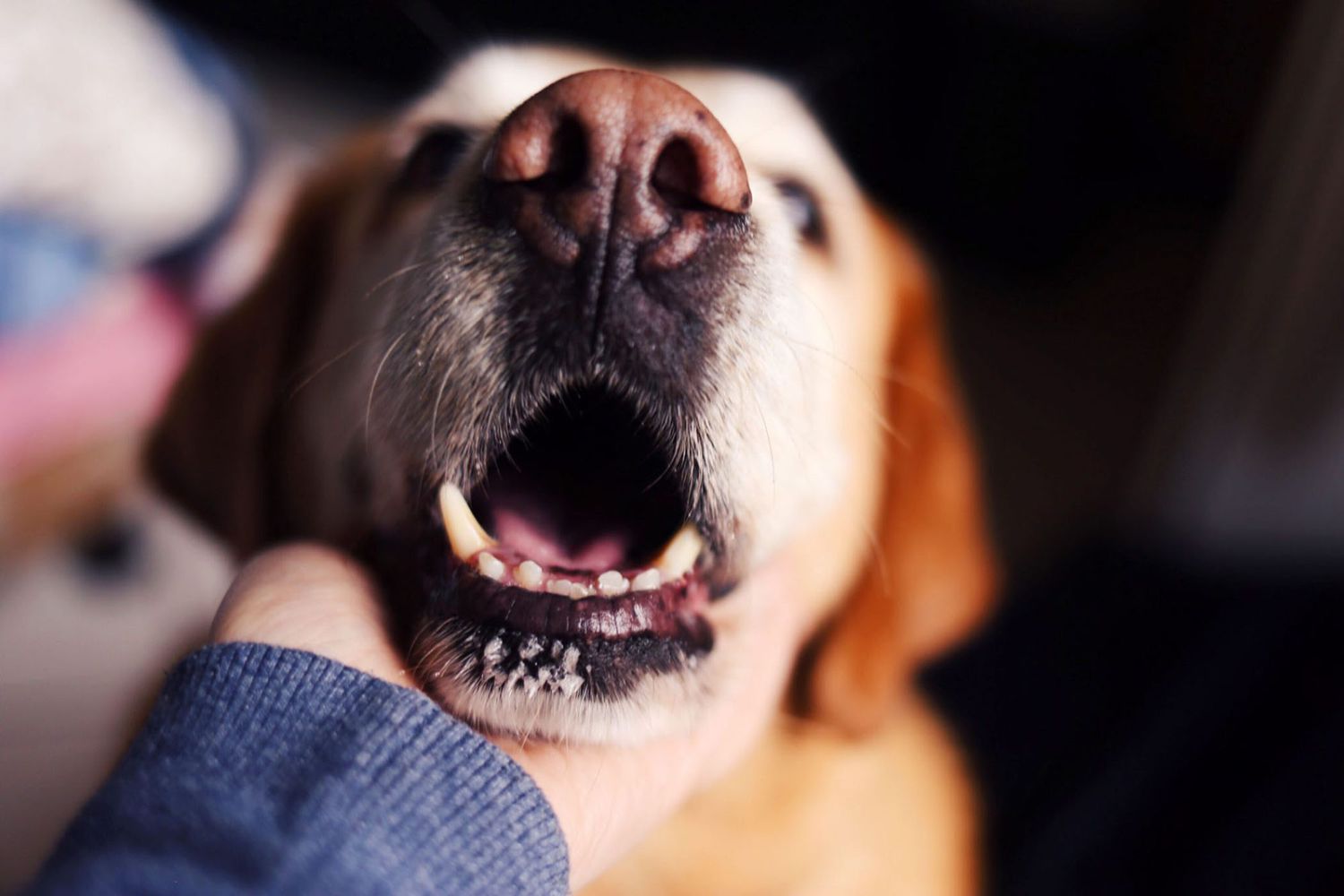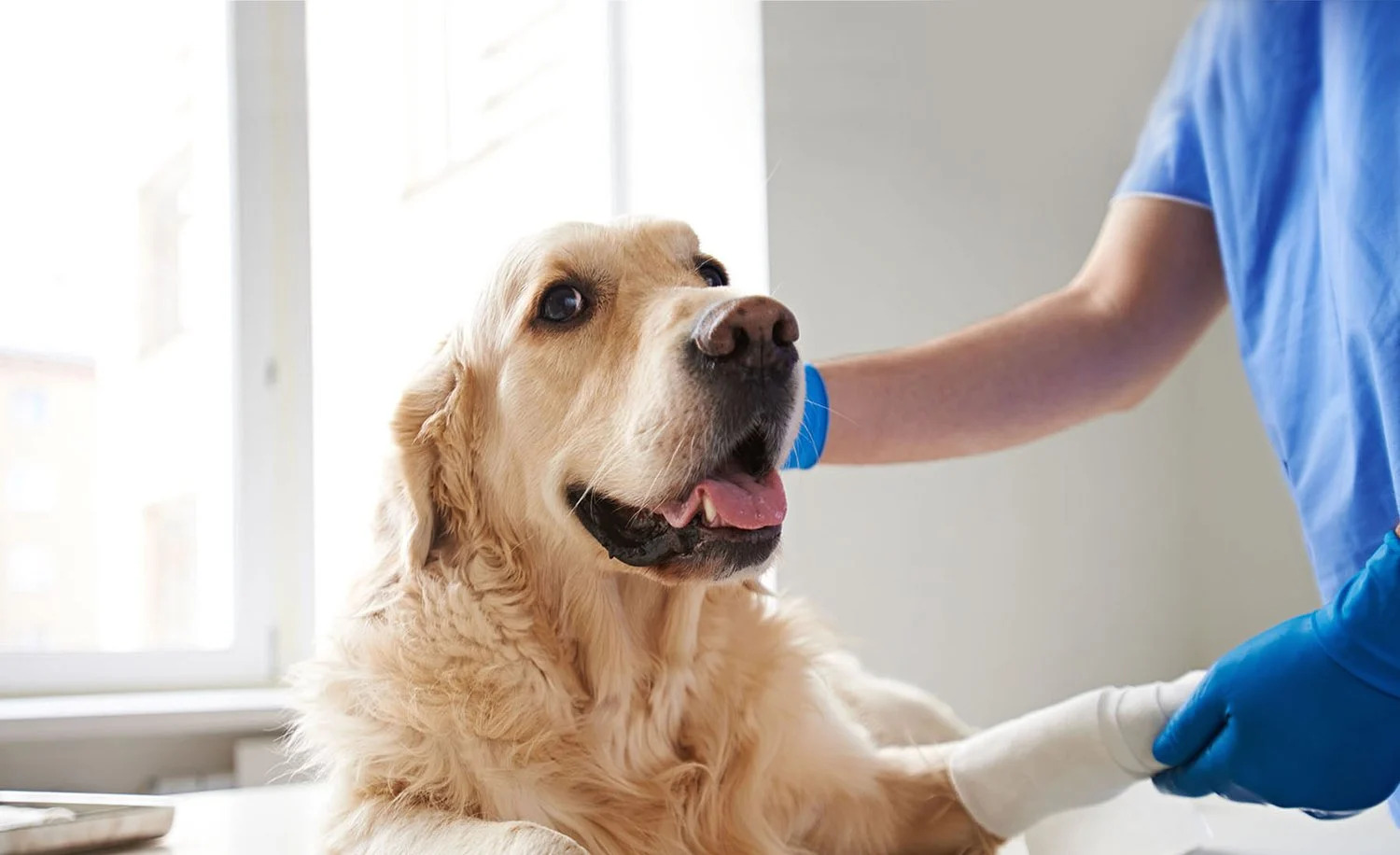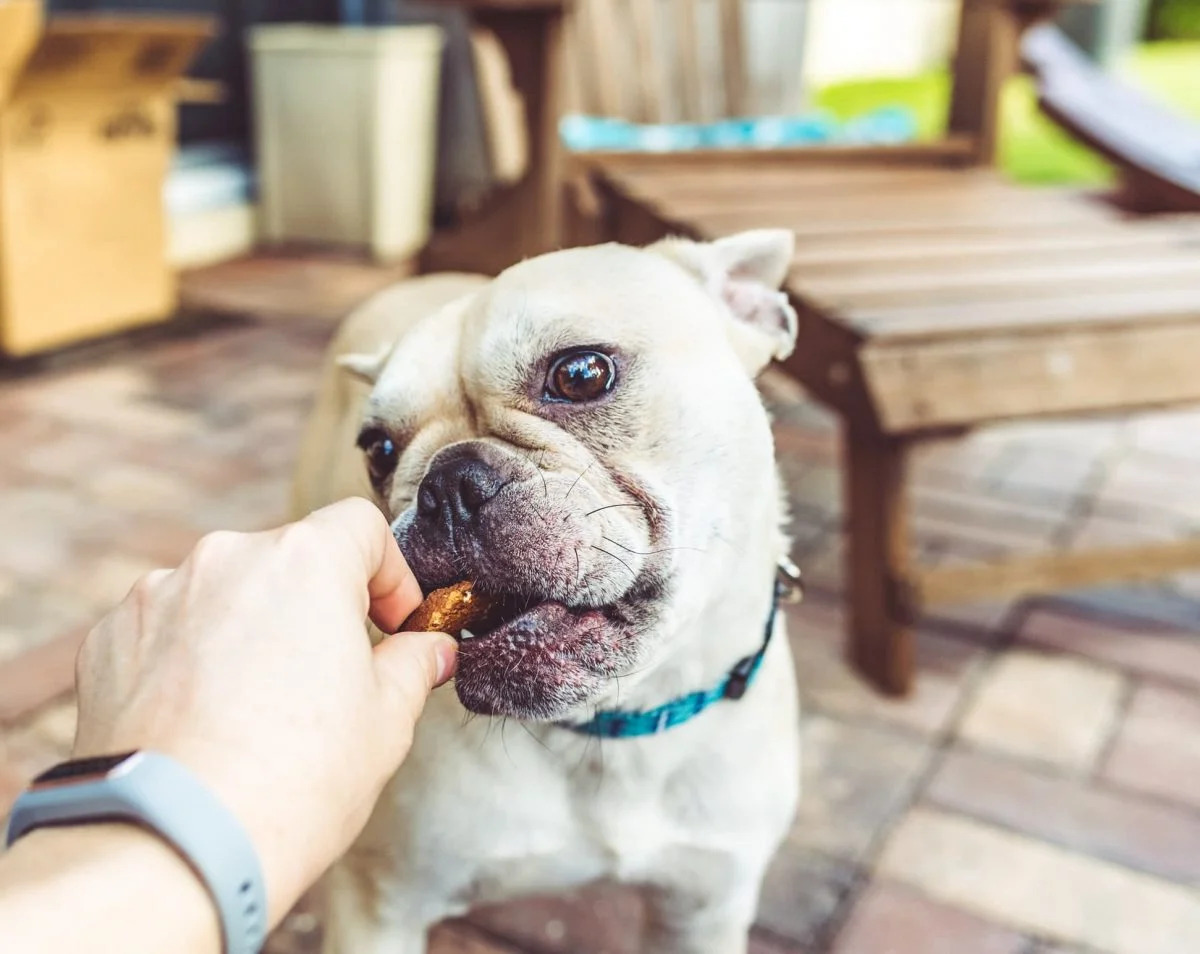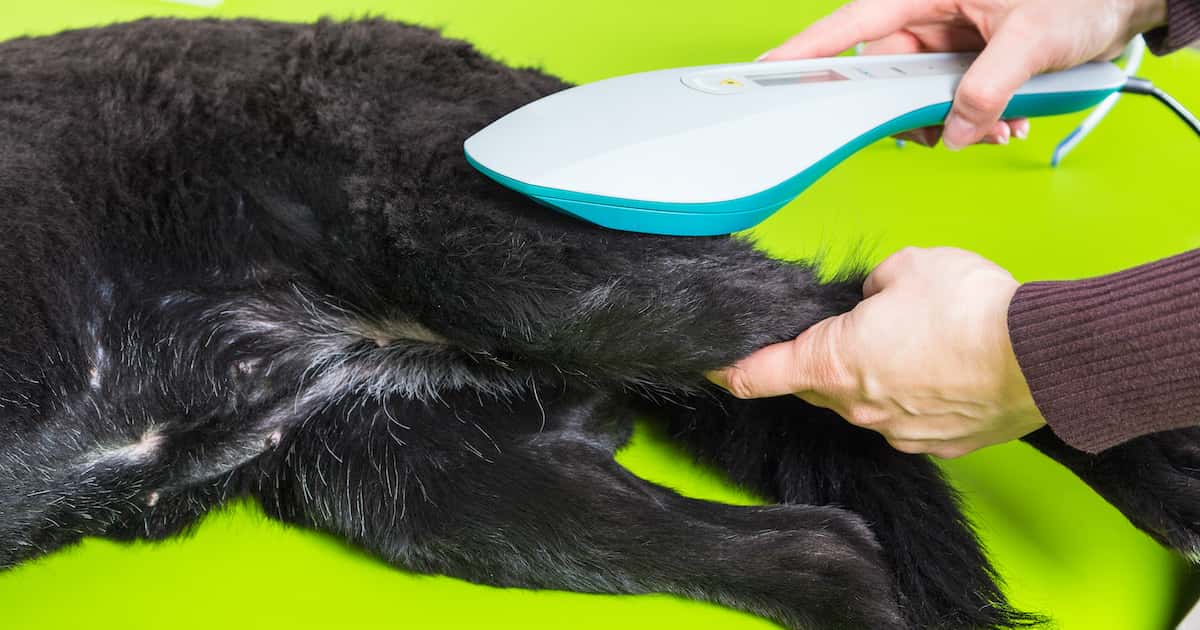Home>Health & Wellness>Common Health Issues>What A Vet Does On A Diabetic Dog’s Glucose Curve
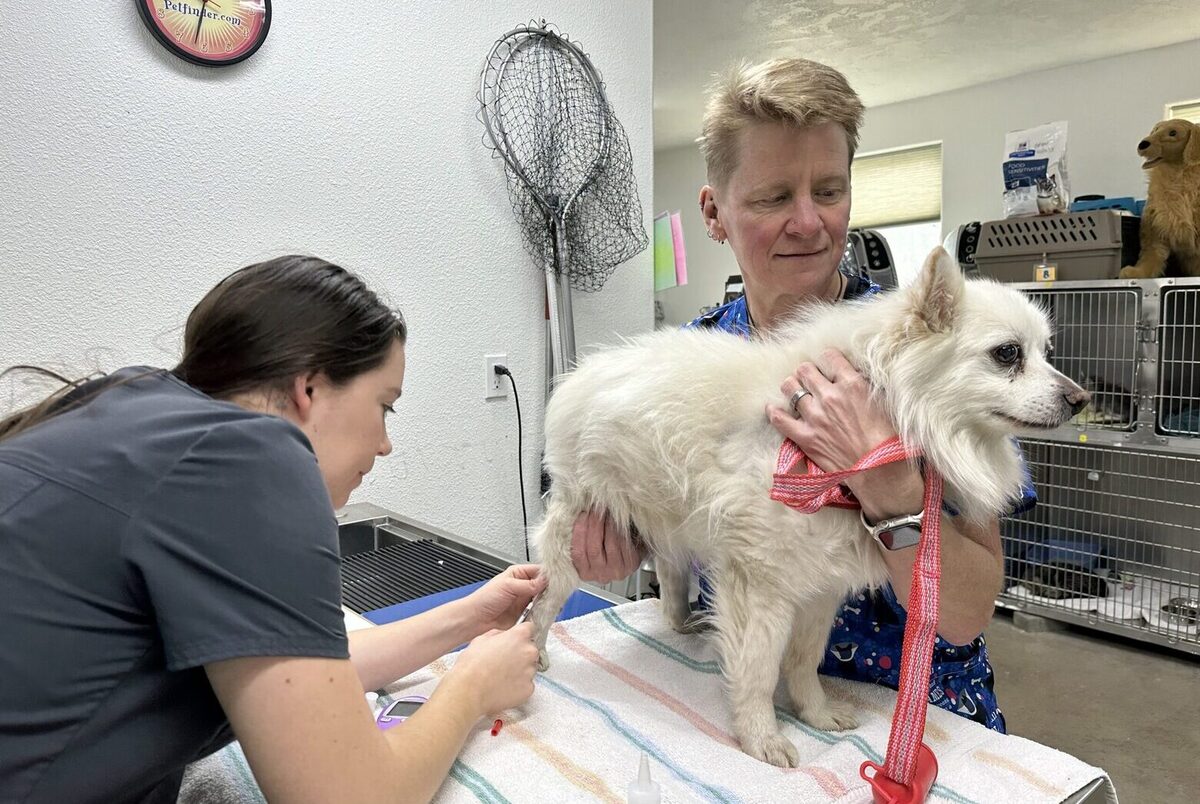

Common Health Issues
What A Vet Does On A Diabetic Dog’s Glucose Curve
Modified: February 21, 2024
Learn how a vet monitors a diabetic dog's glucose curve and manages common health issues. Get expert insights on pet care and diabetes management.
(Many of the links in this article redirect to a specific reviewed product. Your purchase of these products through affiliate links helps to generate commission for Pawsomeoldies.com, at no extra cost. Learn more)
Table of Contents
Introduction
When a beloved furry friend is diagnosed with diabetes, it can be a concerning and overwhelming experience for pet owners. Understanding the condition and the necessary steps to manage it is crucial for ensuring the well-being of the canine companion. One essential aspect of managing diabetes in dogs is the regular monitoring of their blood glucose levels, which is typically done through a procedure known as a glucose curve test.
This article aims to provide a comprehensive insight into the process of conducting a glucose curve test for diabetic dogs. From understanding the fundamentals of diabetes in dogs to the significance of glucose curve monitoring and the practical aspects of preparing for and conducting the test, this guide will offer valuable information for pet owners and caregivers.
By shedding light on the intricacies of this diagnostic procedure, pet owners can gain a deeper understanding of their dog's condition and actively participate in their care. Additionally, veterinarians can utilize this resource to enhance their communication with pet owners, ensuring that they are well-informed and empowered to support their diabetic canine companions effectively.
Understanding the nuances of diabetes management in dogs, particularly the role of glucose curve testing, is pivotal in providing optimal care for these special pets. Let's delve into the world of glucose curve monitoring and explore the essential steps involved in this vital aspect of diabetic dog care.
Understanding Diabetes in Dogs
Diabetes mellitus, commonly referred to as diabetes, is a chronic metabolic disorder that can affect dogs, just as it does humans. In dogs, diabetes occurs when the pancreas is unable to produce enough insulin or when the body becomes resistant to the insulin being produced. Insulin is a hormone essential for regulating blood sugar levels and facilitating the uptake of glucose by cells for energy production.
There are two primary types of diabetes in dogs: Type 1 and Type 2. Type 1 diabetes, also known as insulin-dependent diabetes, occurs when the pancreas fails to produce sufficient insulin. On the other hand, Type 2 diabetes, or non-insulin-dependent diabetes, involves the body's cells becoming resistant to the effects of insulin, leading to inadequate glucose uptake.
The classic symptoms of diabetes in dogs include increased thirst and urination, weight loss despite a good appetite, and lethargy. Additionally, some dogs may experience recurrent urinary tract infections, cataracts, and even neuropathy due to the prolonged elevation of blood sugar levels.
Several factors can contribute to the development of diabetes in dogs, including genetic predisposition, obesity, pancreatitis, and certain medications. Breeds such as Poodles, Dachshunds, Beagles, and Cairn Terriers are more susceptible to developing diabetes.
Understanding the intricacies of diabetes in dogs is crucial for pet owners and veterinarians alike. It enables pet owners to recognize the signs of diabetes early on, seek prompt veterinary care, and actively participate in the management of their dog's condition. For veterinarians, a comprehensive understanding of diabetes in dogs is essential for accurate diagnosis, tailored treatment plans, and ongoing support for pet owners navigating the complexities of canine diabetes management.
By comprehending the underlying mechanisms and clinical manifestations of diabetes in dogs, pet owners and veterinarians can work collaboratively to provide the best possible care for canine companions living with this condition. This understanding forms the foundation for effective diabetes management, including the vital process of glucose curve monitoring, which plays a pivotal role in evaluating the effectiveness of treatment and ensuring the well-being of diabetic dogs.
Importance of Glucose Curve Monitoring
Glucose curve monitoring holds immense significance in the comprehensive management of diabetes in dogs. This diagnostic procedure involves tracking the dog's blood glucose levels at regular intervals throughout the day, typically over a 12 to 24-hour period. The resulting data provides valuable insights into how well the dog's diabetes is being managed and whether adjustments to the treatment plan are necessary.
By conducting glucose curve monitoring, veterinarians can assess the effectiveness of the current insulin regimen, determine the timing and peak activity of the insulin, and identify any fluctuations or abnormalities in the dog's blood sugar levels. This detailed understanding of the dog's glucose profile enables veterinarians to tailor the treatment plan to the specific needs of the individual dog, optimizing their overall health and well-being.
For pet owners, glucose curve monitoring offers a tangible way to gauge the impact of diabetes management on their dog's daily life. It provides a clearer picture of how well the prescribed insulin therapy is working and whether any adjustments are required to maintain stable blood sugar levels. This proactive approach empowers pet owners to actively participate in their dog's care, fostering a sense of involvement and understanding that is invaluable in managing a chronic condition like diabetes.
Moreover, glucose curve monitoring plays a crucial role in preventing potential complications associated with poorly controlled diabetes. Consistently high or fluctuating blood sugar levels can lead to serious health issues for dogs, including diabetic ketoacidosis, cataracts, urinary tract infections, and nerve damage. By closely monitoring the dog's glucose levels and making informed adjustments to their treatment plan, veterinarians can help mitigate these risks and enhance the dog's quality of life.
In essence, glucose curve monitoring serves as a proactive tool for optimizing diabetes management in dogs. It facilitates personalized treatment adjustments, empowers pet owners to actively engage in their dog's care, and mitigates the risk of diabetes-related complications. By recognizing the pivotal role of glucose curve monitoring in the holistic management of canine diabetes, pet owners and veterinarians can work collaboratively to ensure the best possible outcomes for dogs living with this condition.
Preparing for a Glucose Curve Test
Preparing for a glucose curve test is a crucial aspect of ensuring accurate and insightful results. This process involves several key steps that pet owners and veterinarians should consider to optimize the testing procedure and facilitate a smooth experience for the dog.
Fasting Period:
Before conducting a glucose curve test, it is essential to ensure that the dog has been fasted for a specific period, typically 8 to 12 hours. This fasting period helps establish a baseline for the dog's blood glucose levels, providing a clear starting point for the test. Pet owners should withhold food from their diabetic dog overnight, ensuring that the dog does not have access to treats or other sources of food during this time.
Insulin Administration:
In the case of dogs receiving insulin therapy, it is important to adhere to the prescribed insulin schedule leading up to the glucose curve test. This means administering the insulin as usual, following the veterinarian's instructions regarding dosage and timing. Consistency in insulin administration is vital for obtaining accurate insights into the dog's response to the treatment regimen.
Monitoring Water Intake:
During the fasting period, it is crucial to monitor the dog's water intake. While food is withheld, water should be readily available to prevent dehydration. However, excessive water consumption, known as polydipsia, can impact the accuracy of the glucose curve test results. Pet owners should observe and record the dog's water intake during the fasting period, noting any significant deviations from the dog's typical drinking behavior.
Minimizing Stress:
Stress can influence a dog's blood glucose levels, potentially skewing the results of the glucose curve test. Therefore, efforts should be made to minimize stress and anxiety for the dog during the testing process. This may involve creating a calm and familiar environment, ensuring that the dog is comfortable and at ease before and during the test. Additionally, gentle and reassuring interactions with the dog can help alleviate any potential stressors that may impact the accuracy of the test results.
Communication with the Veterinarian:
Prior to the glucose curve test, pet owners should maintain open communication with the veterinarian, discussing any concerns or observations related to the dog's behavior, appetite, and overall well-being. This collaborative approach allows veterinarians to gain a comprehensive understanding of the dog's condition and make informed decisions regarding the glucose curve test and subsequent treatment adjustments.
By diligently preparing for a glucose curve test, pet owners and veterinarians can set the stage for a thorough and informative evaluation of the dog's blood glucose levels. This proactive approach contributes to the accuracy and reliability of the test results, ultimately guiding the optimization of the dog's diabetes management plan.
Conducting the Glucose Curve Test
The process of conducting a glucose curve test involves meticulous monitoring of a diabetic dog's blood glucose levels over an extended period, typically spanning 12 to 24 hours. This comprehensive evaluation provides invaluable insights into the dog's response to insulin therapy, the dynamics of its blood sugar levels throughout the day, and the overall effectiveness of its diabetes management plan.
To initiate the glucose curve test, the veterinarian typically begins by obtaining a baseline blood glucose measurement, often in the morning after the dog has fasted overnight. This initial reading serves as a reference point for the day's monitoring and helps establish the starting point for evaluating the dog's blood sugar trends.
Throughout the test, blood glucose measurements are taken at regular intervals, usually every 2 to 4 hours, depending on the specific protocol recommended by the veterinarian. These measurements are obtained using a small blood sample, often obtained from the dog's ear or paw pad. The samples are then analyzed using a glucometer or other specialized equipment to determine the dog's blood glucose levels at each time point.
In addition to monitoring blood glucose levels, veterinarians also assess other vital parameters during the glucose curve test, including the dog's overall demeanor, appetite, water intake, and any signs of discomfort or unusual behavior. This holistic approach allows for a comprehensive evaluation of the dog's well-being and its response to the testing process.
Throughout the testing period, pet owners play a crucial role in supporting their diabetic dog, ensuring that the dog remains calm, comfortable, and adequately hydrated. Providing a familiar and stress-free environment for the dog can contribute to the accuracy of the test results, as stress and anxiety can influence blood glucose levels.
As the day progresses, the data collected from the glucose curve test forms a detailed profile of the dog's blood sugar fluctuations, revealing patterns, peaks, and troughs in its glucose levels. This comprehensive dataset enables veterinarians to assess the dog's response to insulin, identify any irregularities or trends in its blood sugar control, and make informed decisions regarding potential adjustments to its diabetes management plan.
By meticulously conducting the glucose curve test, veterinarians can gain a deeper understanding of the dog's unique diabetes management needs, tailor its treatment plan accordingly, and empower pet owners with valuable insights into their dog's condition. This proactive approach to monitoring and evaluation forms the cornerstone of effective diabetes management in dogs, ensuring the best possible outcomes for these special canine companions.
Interpreting the Results
Interpreting the results of a glucose curve test is a pivotal aspect of managing diabetes in dogs effectively. The comprehensive dataset obtained from the test, comprising blood glucose measurements taken at regular intervals throughout the day, provides valuable insights into the dog's response to insulin therapy and the dynamics of its blood sugar control.
Upon completing the glucose curve test, veterinarians meticulously analyze the collected data to discern patterns, trends, and fluctuations in the dog's blood glucose levels. This in-depth analysis allows for the identification of crucial indicators, including the peak and nadir (lowest point) of the dog's blood sugar levels, the duration of insulin activity, and any unexpected deviations from the target range.
The interpretation of the results involves assessing the dog's overall glycemic control, evaluating the effectiveness of the current insulin regimen, and determining whether adjustments are necessary to optimize the dog's diabetes management plan. By scrutinizing the blood glucose profile obtained from the test, veterinarians can gain a nuanced understanding of the dog's unique response to insulin, enabling them to make informed decisions regarding treatment modifications.
Furthermore, the results of the glucose curve test offer valuable insights into the dog's daily glucose fluctuations, shedding light on how its blood sugar levels respond to various factors such as insulin administration, meal times, and physical activity. This detailed understanding of the dog's glycemic patterns forms the basis for personalized treatment adjustments, ensuring that the dog's diabetes management plan is tailored to its specific needs.
In addition to evaluating the numerical data, veterinarians also consider the dog's overall well-being and behavior during the testing period. Observations related to the dog's appetite, water intake, energy levels, and any signs of discomfort or unusual behavior contribute to the holistic interpretation of the results, providing a comprehensive assessment of the dog's response to the testing process.
Ultimately, the interpretation of the glucose curve test results empowers veterinarians to make evidence-based decisions regarding the dog's diabetes management, including potential adjustments to its insulin therapy, dietary recommendations, and lifestyle modifications. This proactive approach to interpreting the results ensures that the dog's diabetes is managed optimally, with a focus on maintaining stable blood sugar levels and enhancing its overall quality of life.
By leveraging the insights gleaned from the glucose curve test results, veterinarians can collaborate with pet owners to devise a tailored and effective diabetes management plan, fostering the well-being and vitality of dogs living with this chronic condition.
Adjusting Treatment Plan
After interpreting the results of the glucose curve test, veterinarians may need to consider adjusting the dog's treatment plan to optimize its diabetes management. This process involves making informed modifications to the insulin regimen, dietary recommendations, and overall care plan based on the insights gleaned from the test results.
One of the primary considerations for adjusting the treatment plan is fine-tuning the insulin therapy. By analyzing the dog's blood glucose profile and identifying patterns in its glycemic control, veterinarians can determine whether the current insulin dosage, type, or administration schedule aligns with the dog's specific needs. If the test reveals persistent hyperglycemia or hypoglycemia, adjustments to the insulin dosage or timing may be warranted to achieve more stable blood sugar levels throughout the day.
In some cases, veterinarians may recommend transitioning the dog to a different type of insulin or altering the frequency of insulin administration to better align with the dog's glucose fluctuations. This personalized approach to insulin therapy aims to optimize the dog's glycemic control and minimize the risk of blood sugar imbalances, ultimately enhancing its overall well-being.
In addition to insulin adjustments, dietary modifications may be incorporated into the treatment plan based on the glucose curve test results. By analyzing the dog's blood glucose trends in relation to its meals and insulin administration, veterinarians can provide tailored dietary recommendations to support stable blood sugar levels. This may involve adjusting the timing or composition of the dog's meals, aligning its dietary intake with the dynamics of insulin activity and glucose metabolism.
Furthermore, lifestyle modifications and supportive care strategies may be integrated into the treatment plan to address specific aspects of the dog's diabetes management. This could include recommendations for regular exercise tailored to the dog's individual needs, strategies for monitoring water intake, and guidance on managing potential stressors that may impact the dog's blood sugar control.
The collaborative nature of adjusting the treatment plan involves open communication between veterinarians and pet owners, ensuring that the modifications align with the dog's unique needs and the practical considerations of its daily care. By leveraging the insights obtained from the glucose curve test, veterinarians can tailor the dog's treatment plan to optimize its diabetes management, fostering stable blood sugar levels and enhancing its overall quality of life.
This proactive approach to adjusting the treatment plan reflects the commitment to providing personalized and effective care for dogs living with diabetes, empowering pet owners to actively support their canine companions in managing this chronic condition.
Conclusion
In conclusion, the process of conducting a glucose curve test for diabetic dogs is a vital component of comprehensive diabetes management, offering valuable insights into the dog's glycemic control and response to insulin therapy. By delving into the intricacies of diabetes in dogs, the significance of glucose curve monitoring, and the practical aspects of preparing for and conducting the test, this guide aims to empower pet owners and veterinarians with the knowledge and understanding necessary to support their canine companions effectively.
The journey of managing diabetes in dogs encompasses a multifaceted approach, encompassing diligent monitoring, tailored treatment adjustments, and collaborative decision-making between pet owners and veterinarians. The understanding of diabetes in dogs, including its clinical manifestations, contributing factors, and potential complications, forms the foundation for proactive diabetes management.
The significance of glucose curve monitoring cannot be overstated, as it serves as a proactive tool for optimizing diabetes management in dogs. By tracking the dog's blood glucose levels at regular intervals, veterinarians can gain a nuanced understanding of the dog's response to insulin therapy, identify trends in its glycemic control, and make informed decisions regarding treatment adjustments.
Preparing for a glucose curve test involves careful planning and adherence to specific protocols, ensuring that the testing process yields accurate and insightful results. From the fasting period and insulin administration to minimizing stress and maintaining open communication with the veterinarian, each step contributes to the thoroughness and reliability of the test.
Conducting the glucose curve test requires meticulous monitoring, holistic assessment, and a supportive environment for the dog. The comprehensive evaluation of the dog's blood glucose levels throughout the day provides a detailed profile of its glycemic patterns, enabling veterinarians to make evidence-based decisions regarding treatment modifications.
Interpreting the results of the glucose curve test is a pivotal step in the diabetes management journey, offering veterinarians the opportunity to discern patterns, trends, and fluctuations in the dog's blood glucose levels. This in-depth analysis forms the basis for personalized treatment adjustments, ensuring that the dog's diabetes management plan is tailored to its specific needs.
Adjusting the treatment plan based on the insights gleaned from the glucose curve test results involves fine-tuning insulin therapy, incorporating dietary modifications, and integrating lifestyle strategies to support the dog's overall well-being. This collaborative approach to treatment adjustments reflects the commitment to providing personalized and effective care for dogs living with diabetes.
In essence, the process of conducting a glucose curve test for diabetic dogs embodies the dedication to proactive diabetes management, personalized care, and the well-being of canine companions living with this chronic condition. By embracing the insights and recommendations derived from the glucose curve test, pet owners and veterinarians can work collaboratively to ensure the best possible outcomes for dogs navigating the complexities of diabetes.

